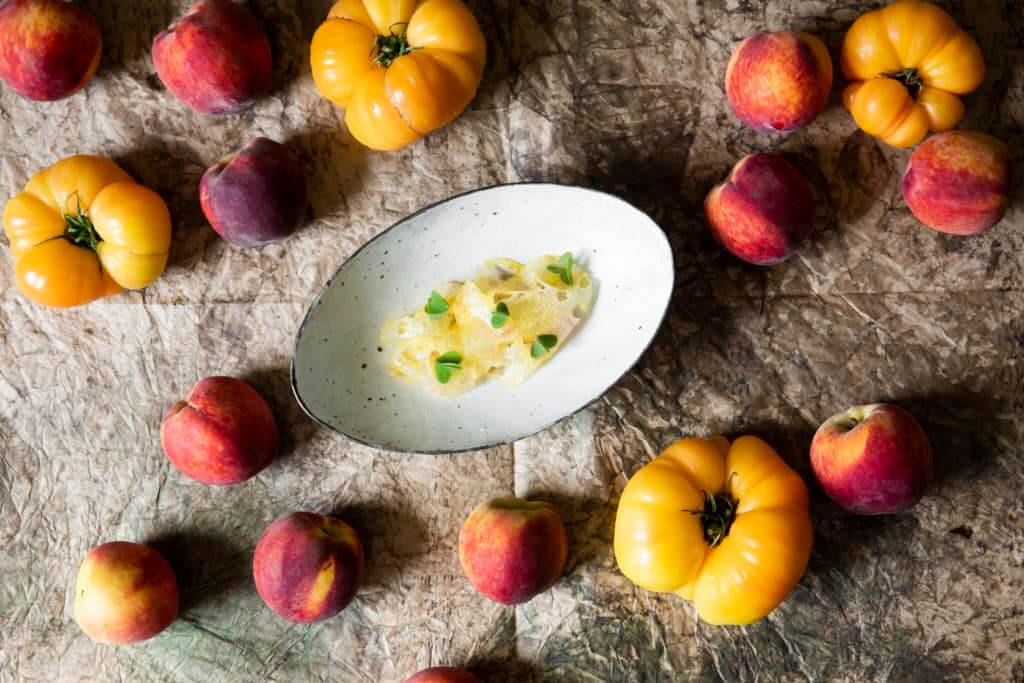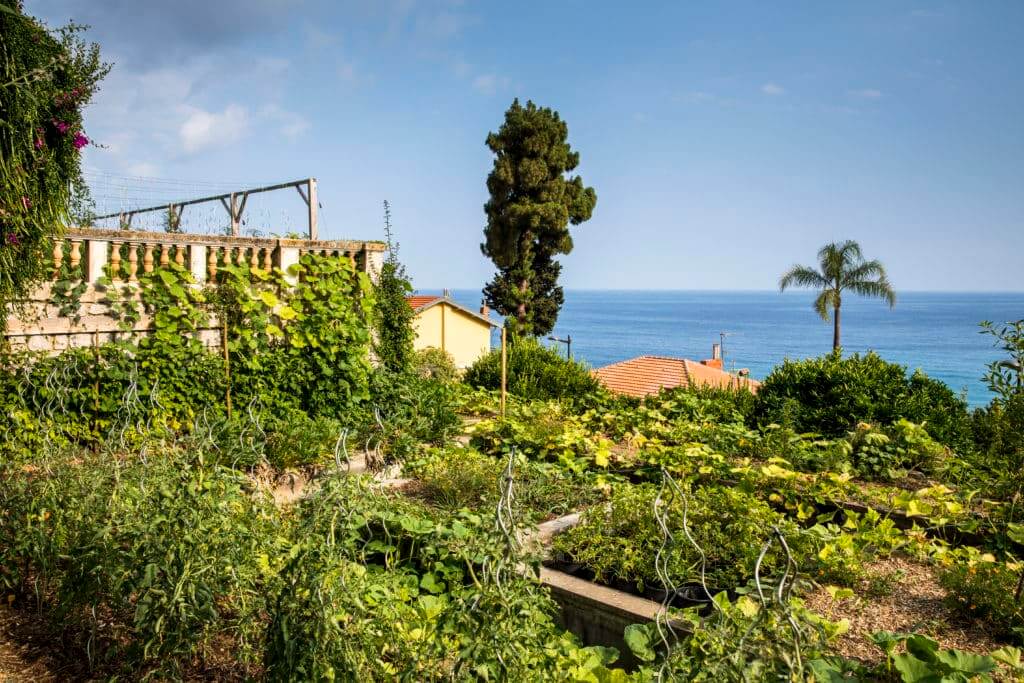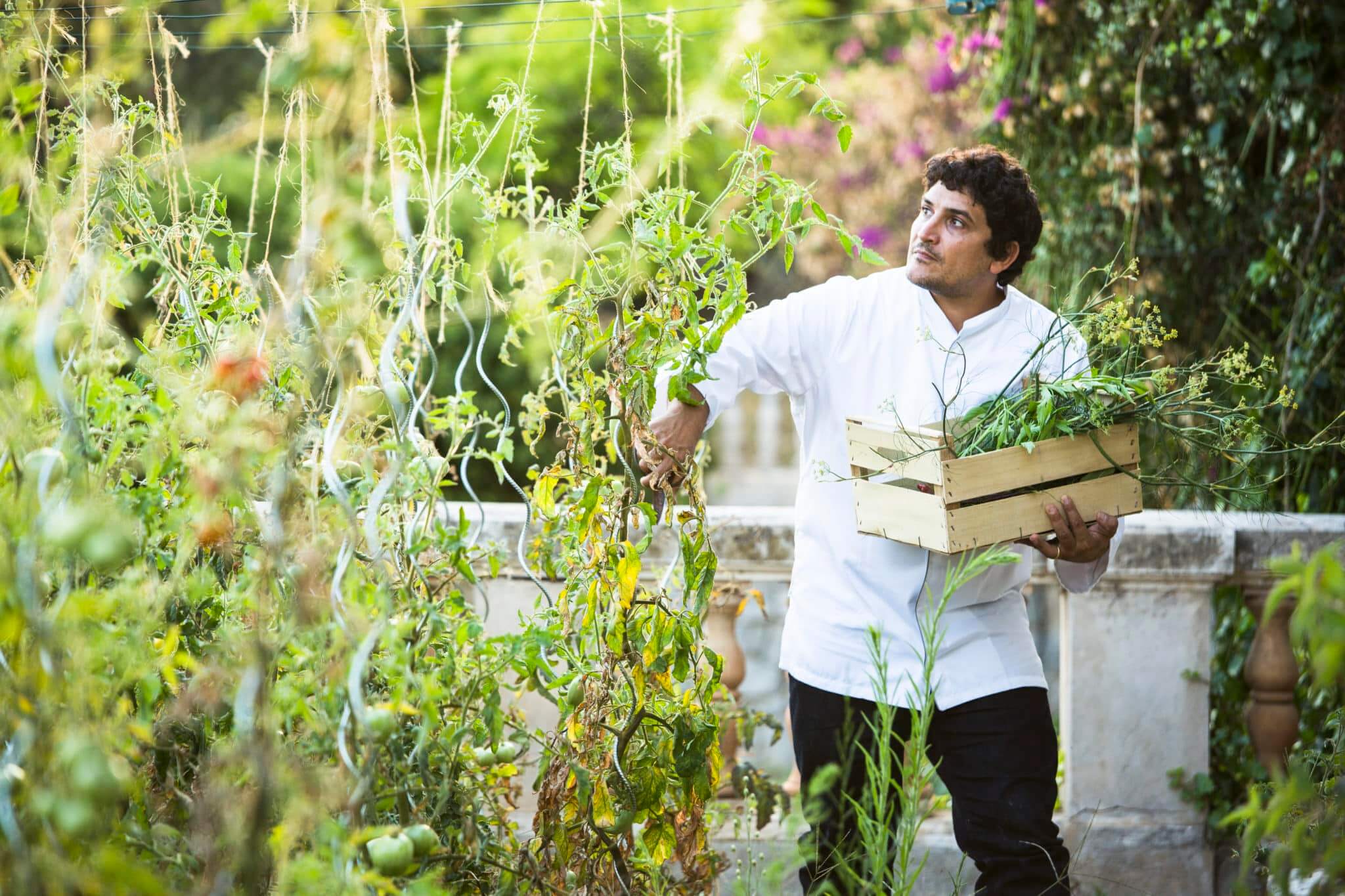For chef Mauro Colagreco, nature provides a wealth of inspiration for his three Michelin-star restaurant, Mirazur, in France.
He sources many ingredients from his five-hectare permaculture and biodynamic garden, farming systems that centralise ecosystem health, as well as buying from local businesses specifically sought out for their eco-responsible initiatives.
With a menu that is closely connected to natural cycles, the food offering evolves depending on the season from leaves and flowers to roots and fruit. “It is important for our guests to know our engagement towards nature and realise that we are interdependent on it no matter what,” says Colagreco.
“Food is at the centre of current issues impacting our lifestyle. We are all called to act and become aware of the importance of our food and consumption choices. As well as protecting the planet, it is about reconnecting with nature and respecting the environment we live in.”

Mirazur has also removed all single-use plastic from the restaurant, earning it the world’s first Plastic Free certification and a Michelin Green Star in 2020 – all part of efforts to reduce the impact that food production and consumption have on the environment.
In this respect, Colagreco and his team are in the minority. But having recently become the first ever chef to be appointed as the UNESCO goodwill ambassador for biodiversity, that’s something he hopes will change.
“A cuisine that strives for excellence cannot be without a strong connection to the earth, respecting biodiversity in all its nuances,” he explains. “What inspires us most in our daily work is finding ways to bridge the gap between today’s society and nature, reconnecting it with its cycles.”
In his new role, Colagreco hopes his message will have an impact on a larger scale. His appointment has even more significance as COP15 opens in Canada this week, described as the last chance to reverse catastrophic degradation of the natural world.
It is important for our guests to know our engagement towards nature and realise that we are interdependent on it no matter what. Mauro Colagreco, chef and UNESCO goodwill ambassador for biodiversity.
“We hope that our message can come across as stronger with the support of such a prestigious organisation as UNESCO,” he continues. “It will be an opportunity for us to go further and perhaps influencing a more significant change.”
Biodiversity loss is among the biggest threats to food security globally as well as in the UK. Ironic then that the global food system is the primary driver of biodiversity loss, with agricultural expansion driving nearly 90 per cent of global deforestation.
That irony isn’t lost on Tom Ludwig, sector head for regenerative and sustainable farming at research firm NatureMetrics. But where chefs have historically been left out of the conversation, Ludwig explains that Colagreco’s appointment embodies the close connection between nature and food.

“So much of land on planet earth is used for agriculture; so much biodiversity of land is being absorbed by the food system,” Ludwig says. “So, if we have someone who understands that food system intimately then we have a much better chance of those two worlds working more in harmony.”
The global food system is the primary driver of biodiversity loss, with agricultural expansion driving nearly 90 per cent of global deforestation.
It may not be a straightforward solution though. Ludwig notes that many conservationists today are obsessed with species abundance – the exact number of orangutans in the rainforest, perhaps. Yet he hopes the narrative will shift to below-ground diversity – how many different types of bacteria or fungi are in an ecosystem, for example.
This, combined with above-ground diversity in the form of habitats, is essential in ensuring a broad population of vertebrates and invertebrates, supporting populations that provide essential functions like pollination. This in turn feeds larger mammals further up the food chain – including us.
In some respects, this change in narrative is already happening. Chefs, farmers and producers are beginning to work together to move away from traditional, commercial crops; incorporate smaller grains or cover crops into dishes; and focus on seasonality.
The most inspiring chefs I know spend time with their growers to understand the change in seasons and challenges farmers face. Tom Ludwig, head of regenerative and sustainable farming at NatureMetrics.
But in order to create the most impact, there needs to be more connection between food producers and end users, according to plant-based chef Bettina Campolucci Bordi.
“People within the food industry need to be part of the conversation with the decision makers,” she says. “We need to bridge the gap between people running huge companies that are growing and producing food, and people directly involved in cooking and consuming the ingredients.”
With chefs connecting with suppliers on one side and consumers on the other, they are the obvious bridge.
“The most inspiring chefs I know spend time with their growers to understand the change in seasons and challenges farmers face,” Ludwig says.
It’s a work in progress for the food and beverage industry, but Colagreco says there’s no time to waste. Chefs must step up and “own the change” at every level. But at the end of the day, his role could be the catalyst that the food industry needs.
“Chefs are the storytellers,” Ludwig says. “And as humans we connect most powerfully with one another when there’s a story to be told. For a chef, that comes in the form of artistry on the plate and the dining experience within a restaurant.
“If we have someone in post leading on the biodiversity agenda who understands some of these issues and how the food system is in urgent need of review, then I think that can only be a promising thing.”
Four ways chefs can work with biodiversity:
By Mauro Colagreco
- Identify producers and the origin of the products. Working with local businesses and produce from our surrounding land was key for us at Mirazur.
- Reduce the impact of the raw materials you use by choosing seasonal and local and limiting their waste.
- Support the regeneration of the soil – directly or through collaboration with farmers and producers.
- Measure the results to create better solutions that work for businesses.









0 Comments